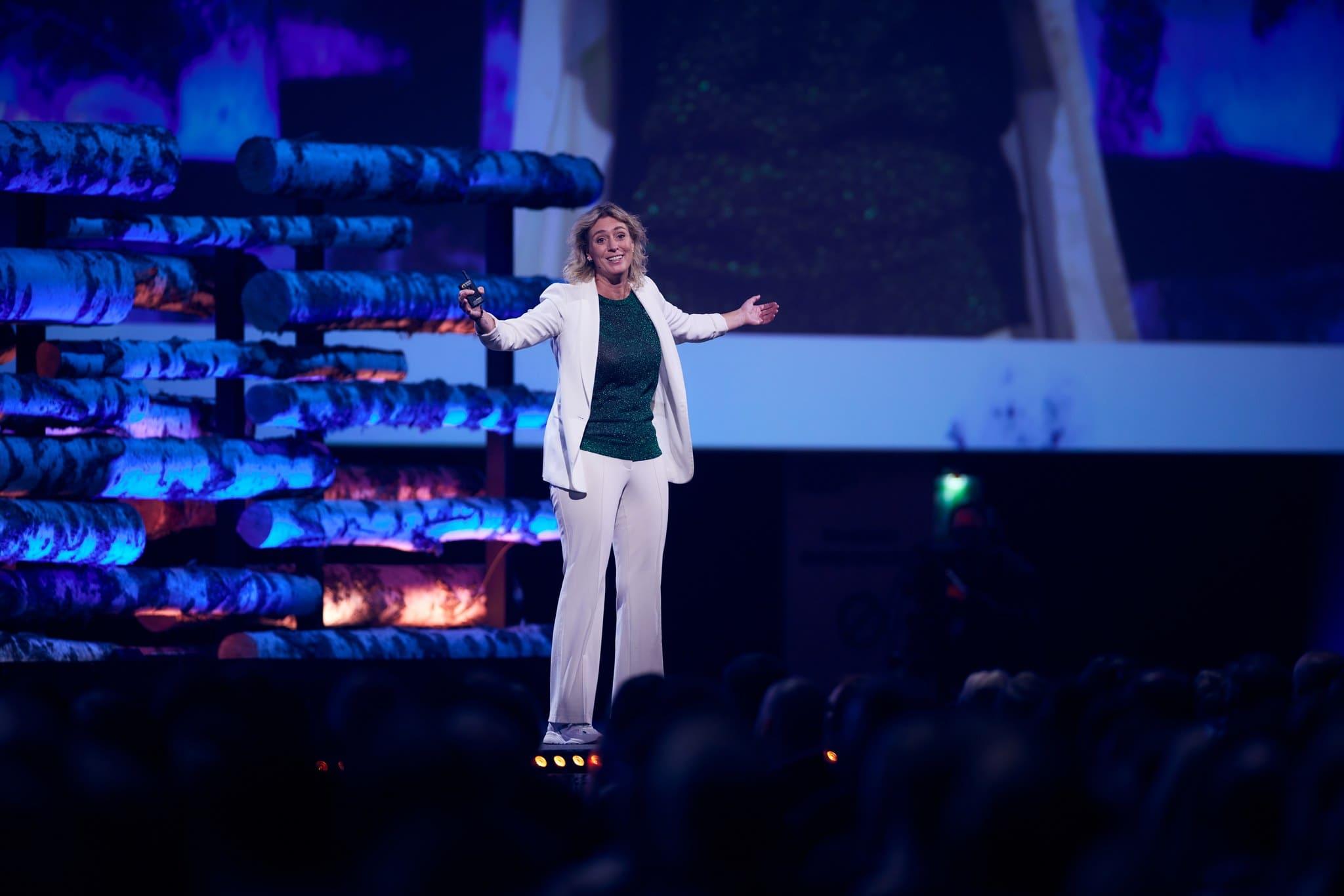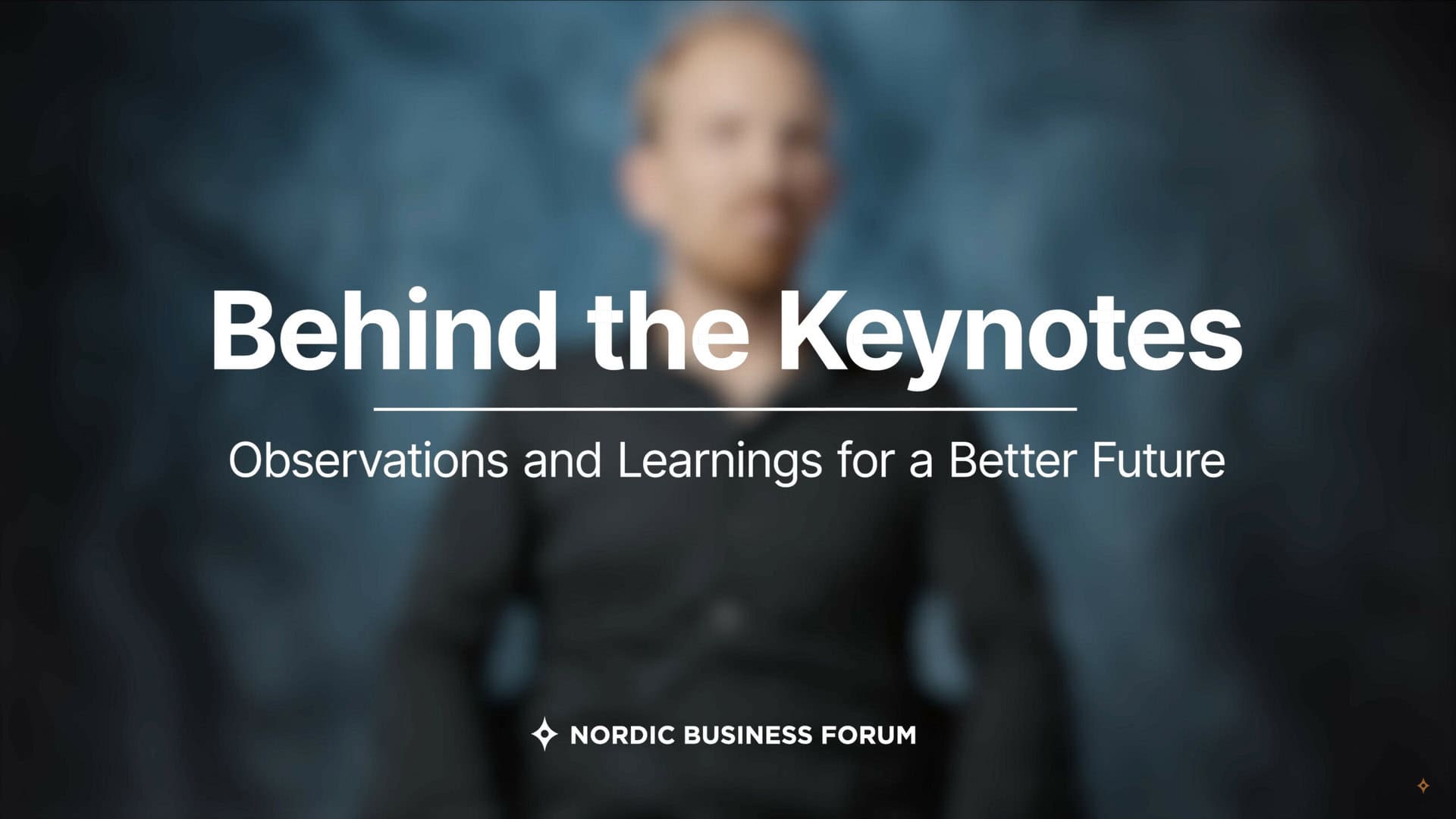Behind the Keynotes
Episode 4: Embracing Culture & Diversity
Study Guide
Lesson Notes
Building a resilient and unified organizational culture requires an understanding of the differences between individuals and how to utilize them as a strength while nurturing the connections between people. Our experts introduced several ideas for creating cultures and fostering diversity for the benefit of organizations and their people.
The Foundations of Culture
A Leader’s Role
Kim Scott explains that culture emerges from how leaders manage themselves, their relationships, and their responsibilities. Leaders who are centered, relational, and responsible create strong, resilient cultures by:
- Centering themselves and maintaining personal well-being to lead effectively.
- Building strong, trust-based relationships with their team members to foster collaboration and support.
- Fulfilling their responsibilities by fostering open feedback, developing great teams, and achieving results.
Leadership starts with self-awareness, grows through meaningful connections, and culminates in purposeful actions that shape a strong organizational culture.
Process Accountability
Adam Grant warns against focusing solely on results, as this can mask issues within the decision-making process. Diverse teams need structures that encourage open exploration of options and thorough evaluation. Organizations that emphasize the quality of their processes, rather than just outcomes, are better positioned to harness the benefits of diversity and build a resilient culture.
Culture and Diversity Are Interdependent
Bozoma Saint John and Will Guidara explain that diversity is foundational to creating a vibrant, inclusive, and engaging culture. A culture that embraces diversity becomes more dynamic and capable of addressing the needs of a diverse world. Without diversity, organizational culture risks becoming stagnant and disconnected from the broader environment.
Harnessing Diversity
Diversity, Empathy, and Connection
Steven Van Belleghem and Bozoma Saint John discuss the role of direct engagement with customers and curiosity about people in fostering empathy. Direct interaction helps build a customer-centric culture while understanding shared human experiences can help find common ground and navigate differences.
Bozoma adds that diverse perspectives are essential for emotionally resonating with a global audience. A lack of diversity limits the ability of brands to genuinely connect with people from different backgrounds. To connect with diverse consumers, organizations need to embed diversity and inclusion into their strategies.
Asking for Help Encourages Collaboration
Adam Grant discusses the importance of normalizing help-seeking in organizations. By encouraging vulnerability and collaboration, diverse teams can better identify how to leverage their collective strengths. Diversity thrives in environments where individuals feel safe asking for help, allowing everyone to contribute their unique perspectives and skills.
Diversity Fuels Creativity and Innovation
Will Guidara and Sanna Suvanto-Harsaae highlight how diverse teams generate better ideas because they bring multiple perspectives to the table. Diversity ensures that creative solutions reflect a broader range of experiences and thought processes, which is particularly important when designing products or services for a diverse audience. Homogeneous teams may fail to innovate effectively because they lack the contrasting perspectives necessary for unique ideas and solutions. However, diversity should align with shared company values.
Ask Yourself
Am I taking the necessary steps to ensure that my team represents and is exposed to diverse ideas and opinions?
Bozoma Saint John emphasizes that diversity is about ensuring that different perspectives shape company strategy to accurately reflect the diversity in the world we operate in. Are you incorporating diverse voices in decision-making, product development, and customer engagement?
Am I paying attention to my own behavior and ensuring that I am in the right mindset to lead effectively?
- Kim Scott stresses that culture starts with leadership. Are you maintaining balance in your personal well-being, building strong relationships with your team, and leading with the intention of creating a culture of trust, collaboration, and resilience?
Do I prioritize process accountability over short-term results, and does my team feel encouraged to explore multiple options before making decisions?
Reflect on Adam Grant’s warning about focusing too much on outcomes rather than the quality of decision-making. Are you fostering an environment where people feel comfortable debating alternatives and making informed choices?
Am I creating enough opportunities for my team to engage directly with customers?
Think about Steven Van Belleghem’s insight on direct customer interaction. Are your employees able to hear customer feedback firsthand, and does this shape how they approach their work and company culture?

The Episode in 3 Quotes
“Diversity, for me, is not about anything else than different ways of thinking for different reasons.” – Sanna Suvanto-Harsaae
“The best way to make sure that what we’re serving will be enjoyed by a diverse audience is to ensure that the group of people creating that experience are diverse as well.” – Will Guidara
“Your culture emerges from the way you stay centered, the relationships you build, and the way you conduct yourself as you fulfill your responsibilities. That is what we can do to build great cultures, even in times of change.” – Kim Scott




